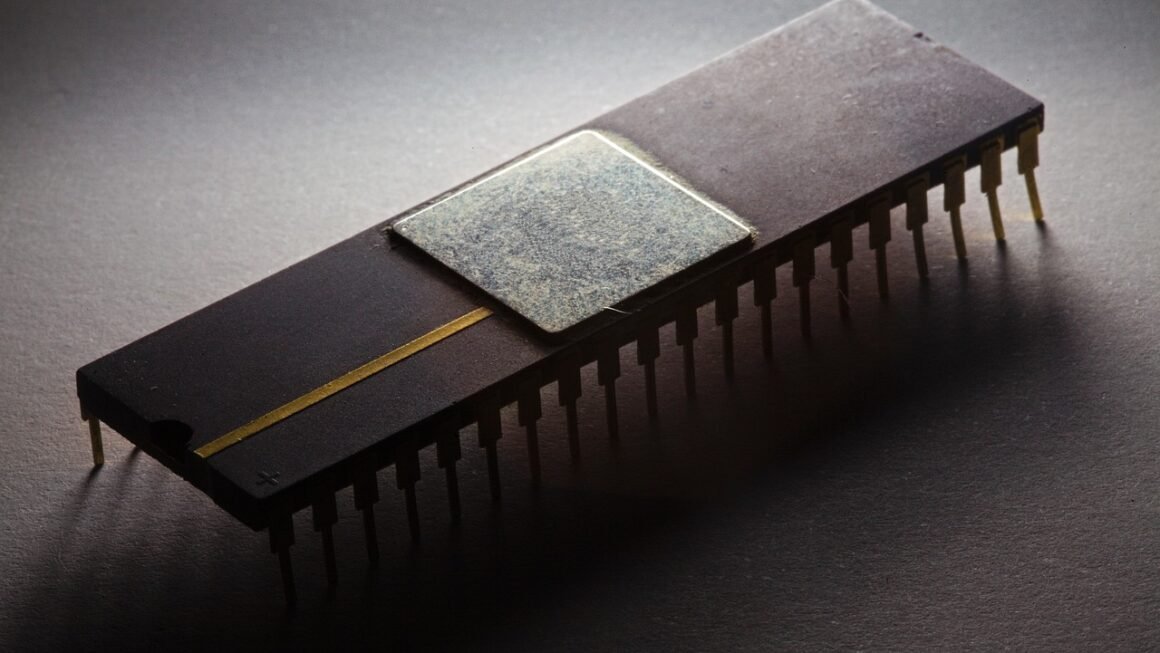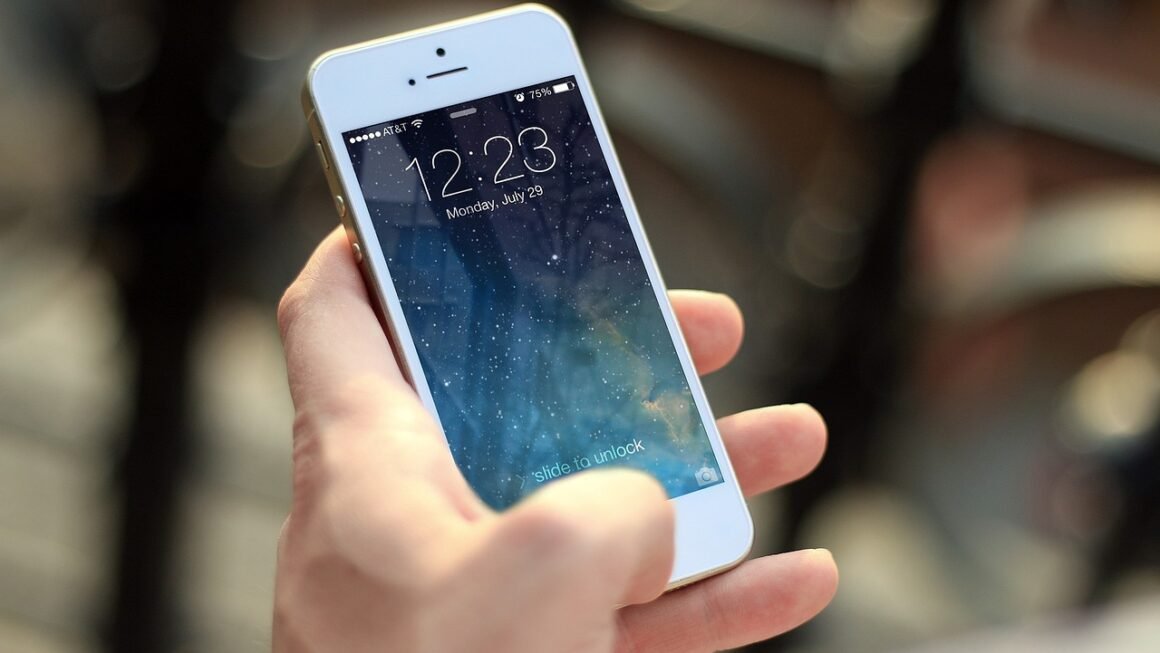Wearable technology has evolved from clunky gadgets to sleek, integrated parts of our daily lives. From fitness trackers to smartwatches, these devices offer a wealth of data and functionality right on our wrists, ears, and even incorporated into our clothing. This blog post delves into the world of wearable tech, exploring its various types, benefits, applications, and future trends, providing a comprehensive guide for anyone curious about this exciting technology.
Understanding Wearable Technology
Wearable technology refers to electronic devices that can be worn on the body, either as accessories or as part of clothing. These devices are designed to provide users with real-time information, track data, and offer convenient access to various functionalities. The market is diverse, with innovations emerging constantly, making it essential to understand the different types available.
Types of Wearable Devices
- Smartwatches: These are perhaps the most recognizable wearable devices, offering features like notifications, fitness tracking, communication, and even app functionality.
Examples: Apple Watch, Samsung Galaxy Watch, Fitbit Versa.
Key features: Heart rate monitoring, GPS tracking, sleep analysis, smartphone integration.
- Fitness Trackers: Primarily focused on monitoring physical activity, these devices track steps, distance, calories burned, and sleep patterns.
Examples: Fitbit Inspire, Garmin Vivosmart, Xiaomi Mi Band.
Key features: Activity tracking, sleep monitoring, waterproof design, long battery life.
- Smart Glasses: These glasses provide users with augmented reality (AR) experiences, displaying information and images directly in their field of vision.
Examples: Google Glass, Vuzix Blade.
Key features: AR display, voice control, camera, notification display.
- Smart Clothing: Garments embedded with sensors to track biometric data such as heart rate, breathing rate, and muscle activity.
Examples: Athos, Hexoskin.
Key features: Real-time data collection, comfortable design, machine washable.
- Head-Mounted Displays (HMDs): Primarily used for virtual reality (VR) and gaming, these devices immerse users in simulated environments.
Examples: Oculus Rift, HTC Vive, PlayStation VR.
Key features: Immersive VR experience, high-resolution display, motion tracking.
Key Components and Technologies
Wearable devices rely on a combination of hardware and software to deliver their functionalities. Understanding these components is crucial to appreciating the technology behind them.
- Sensors: Collect data from the user’s body and environment (e.g., accelerometers, gyroscopes, heart rate sensors, GPS).
- Processors: Analyze the data collected by the sensors and perform various tasks.
- Connectivity: Enable communication with smartphones, computers, and other devices (e.g., Bluetooth, Wi-Fi, cellular).
- Batteries: Provide power to the devices (battery life varies significantly across different devices).
- Software: Includes operating systems, apps, and algorithms that control the device and process data.
Health and Fitness Applications of Wearables
One of the most significant applications of wearable technology is in the realm of health and fitness. These devices empower individuals to track their activity levels, monitor vital signs, and make informed decisions about their health.
Monitoring Vital Signs
Wearable devices are equipped with sensors that can continuously monitor various vital signs.
- Heart Rate Monitoring: Provides real-time heart rate data, helping users track their cardiovascular health and optimize workouts.
Example: Monitoring heart rate zones during exercise to maximize fat burning or improve endurance.
- Sleep Tracking: Analyzes sleep patterns, including sleep duration, sleep stages, and sleep quality, providing insights into sleep habits.
Example: Identifying sleep disturbances and making adjustments to bedtime routines to improve sleep quality.
- Blood Oxygen Saturation (SpO2): Measures the percentage of oxygen in the blood, indicating respiratory health and potential issues.
Example: Monitoring SpO2 levels during sleep to detect potential sleep apnea.
- ECG Monitoring: Some advanced smartwatches can perform electrocardiograms (ECGs), detecting irregular heart rhythms and potential heart conditions.
Example: Detecting atrial fibrillation and sharing ECG data with a healthcare professional.
Enhancing Fitness and Performance
Wearables can be used to track and analyze fitness activities, providing valuable data for improving performance.
- Activity Tracking: Tracks steps, distance, calories burned, and active minutes, motivating users to stay active throughout the day.
Example: Setting daily step goals and tracking progress to maintain a healthy lifestyle.
- Workout Tracking: Records data from various workouts, including running, cycling, swimming, and weightlifting, providing insights into performance.
Example: Tracking pace, distance, and heart rate during a run to improve running efficiency.
- GPS Tracking: Provides accurate location data, allowing users to track their routes and distances during outdoor activities.
Example: Mapping out running routes and tracking elevation gain during hikes.
Actionable Takeaways for Health and Fitness
- Set Realistic Goals: Start with small, achievable goals and gradually increase the intensity and duration of activities.
- Track Progress Consistently: Regularly monitor data and adjust routines based on progress and insights.
- Consult a Healthcare Professional: Share data with a doctor or trainer to get personalized advice and recommendations.
The Growing Use of Wearables in Healthcare
Beyond personal fitness, wearable technology is making significant strides in healthcare, offering remote patient monitoring, disease management, and improved patient outcomes.
Remote Patient Monitoring
Wearable devices enable healthcare providers to remotely monitor patients’ vital signs and health conditions, allowing for early detection of potential issues.
- Chronic Disease Management: Monitoring patients with chronic conditions such as diabetes, heart disease, and asthma, providing real-time data to healthcare providers.
Example: Monitoring blood glucose levels in diabetic patients and alerting healthcare providers to abnormal readings.
- Post-Surgery Monitoring: Tracking patients’ recovery progress after surgery, monitoring vital signs and activity levels to detect complications early.
Example: Monitoring heart rate and activity levels in post-operative patients to ensure proper recovery.
Clinical Trials and Research
Wearable devices are being used in clinical trials and research studies to collect real-world data and assess the effectiveness of treatments.
- Data Collection: Collecting continuous data on patients’ activity levels, sleep patterns, and vital signs, providing valuable insights for research.
- Drug Development: Assessing the impact of new drugs on patients’ health and well-being.
- Behavioral Research: Studying human behavior and its impact on health outcomes.
Examples of Wearable Technology in Healthcare
- Cardiac Monitoring Patches: Adhesive patches that continuously monitor heart activity and transmit data to healthcare providers.
- Smart Insulin Pens: Insulin pens that track dosage and timing, providing data for better diabetes management.
- Medication Adherence Sensors: Sensors that track medication intake, ensuring patients adhere to their prescribed regimens.
Wearables in Business and Industry
The adoption of wearable technology extends beyond personal use and healthcare, finding valuable applications in various industries.
Enhancing Productivity and Efficiency
Wearables can improve productivity and efficiency by providing workers with hands-free access to information and tools.
- Logistics and Warehousing: Using smart glasses and smartwatches to guide workers through tasks, track inventory, and improve order fulfillment.
Example: Warehouse workers using smart glasses to scan barcodes and locate products efficiently.
- Manufacturing: Providing workers with real-time information about machine performance, safety alerts, and maintenance schedules.
Example: Factory workers using smartwatches to receive alerts about machine malfunctions and safety hazards.
Improving Safety and Security
Wearables can enhance workplace safety and security by monitoring workers’ health and location, detecting potential hazards, and providing emergency assistance.
- Construction: Monitoring workers’ vital signs, detecting falls, and providing alerts in case of emergencies.
Example: Construction workers wearing smart helmets with sensors that detect falls and automatically alert emergency services.
- Mining: Tracking workers’ location, monitoring air quality, and providing alerts in case of dangerous conditions.
Example:* Miners wearing wearable sensors that detect gas leaks and provide alerts to evacuate the area.
Actionable Takeaways for Business and Industry
- Identify Specific Needs: Determine the specific challenges and opportunities in the workplace that wearable technology can address.
- Pilot Projects: Conduct pilot projects to test the effectiveness of wearable devices and gather feedback from workers.
- Employee Training: Provide thorough training to ensure workers understand how to use the devices effectively and safely.
The Future of Wearable Technology
The future of wearable technology promises even more advanced features, seamless integration, and widespread adoption.
Emerging Trends and Innovations
- Advanced Sensors: Development of more sophisticated sensors that can track a wider range of biometric data, including glucose levels, blood pressure, and stress levels.
- Flexible and Stretchable Electronics: Creating wearable devices that are more comfortable and conform to the body’s shape.
- Artificial Intelligence (AI) Integration: Using AI to analyze data collected by wearable devices and provide personalized insights and recommendations.
- Augmented Reality (AR) Integration: Blending virtual and real-world experiences through smart glasses and other AR-enabled wearables.
- Energy Harvesting: Developing wearable devices that can generate their own power from body heat, solar energy, or kinetic energy.
Potential Impact on Society
- Personalized Healthcare: Enabling more personalized and proactive healthcare, with wearable devices providing continuous data and insights to healthcare providers.
- Improved Productivity and Efficiency: Enhancing productivity and efficiency in various industries, with wearable devices providing workers with real-time information and tools.
- Enhanced Safety and Security: Improving safety and security in workplaces and public spaces, with wearable devices monitoring health, detecting hazards, and providing emergency assistance.
- Greater Connectivity and Convenience: Providing users with seamless access to information, communication, and entertainment, enhancing their daily lives.
Conclusion
Wearable technology has come a long way and continues to evolve at a rapid pace. Its applications span across health and fitness, healthcare, business, and beyond. Understanding the various types of wearable devices, their functionalities, and their potential impact is crucial for anyone looking to leverage this technology to improve their lives or their businesses. As technology advances, we can expect even more innovative and integrated wearable solutions that transform how we live, work, and interact with the world around us. The key to successful adoption lies in identifying specific needs, setting realistic goals, and staying informed about the latest advancements in this exciting field.



